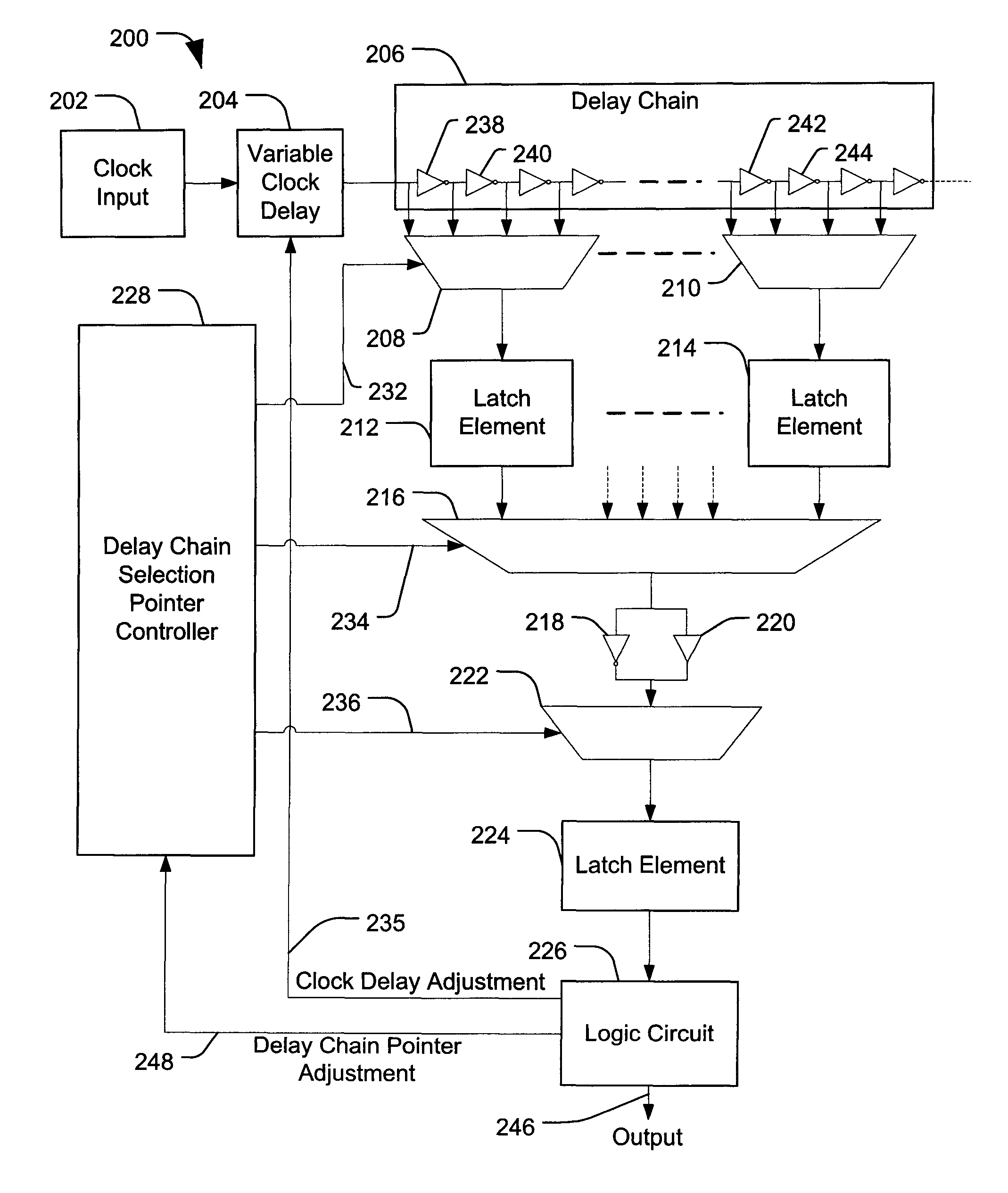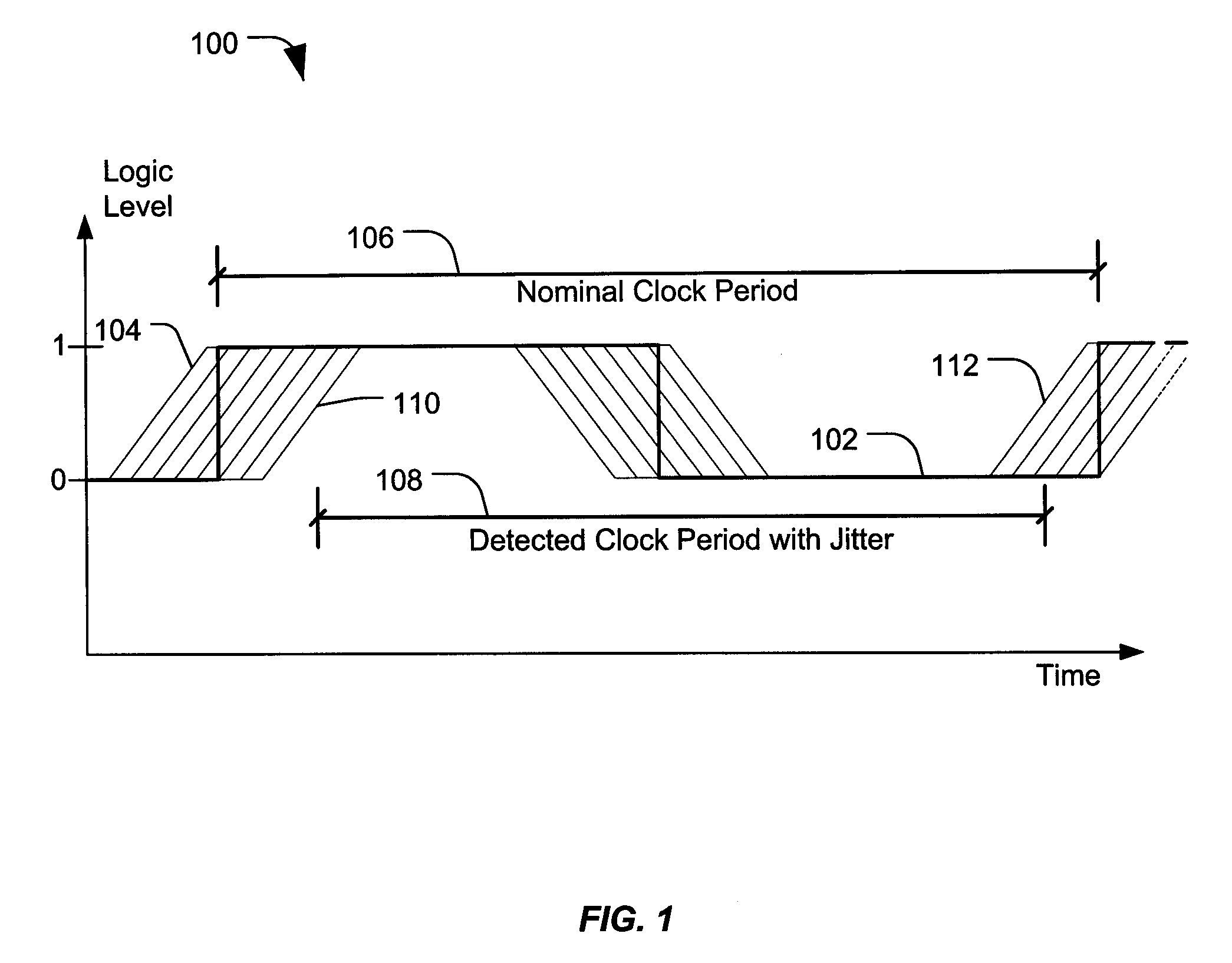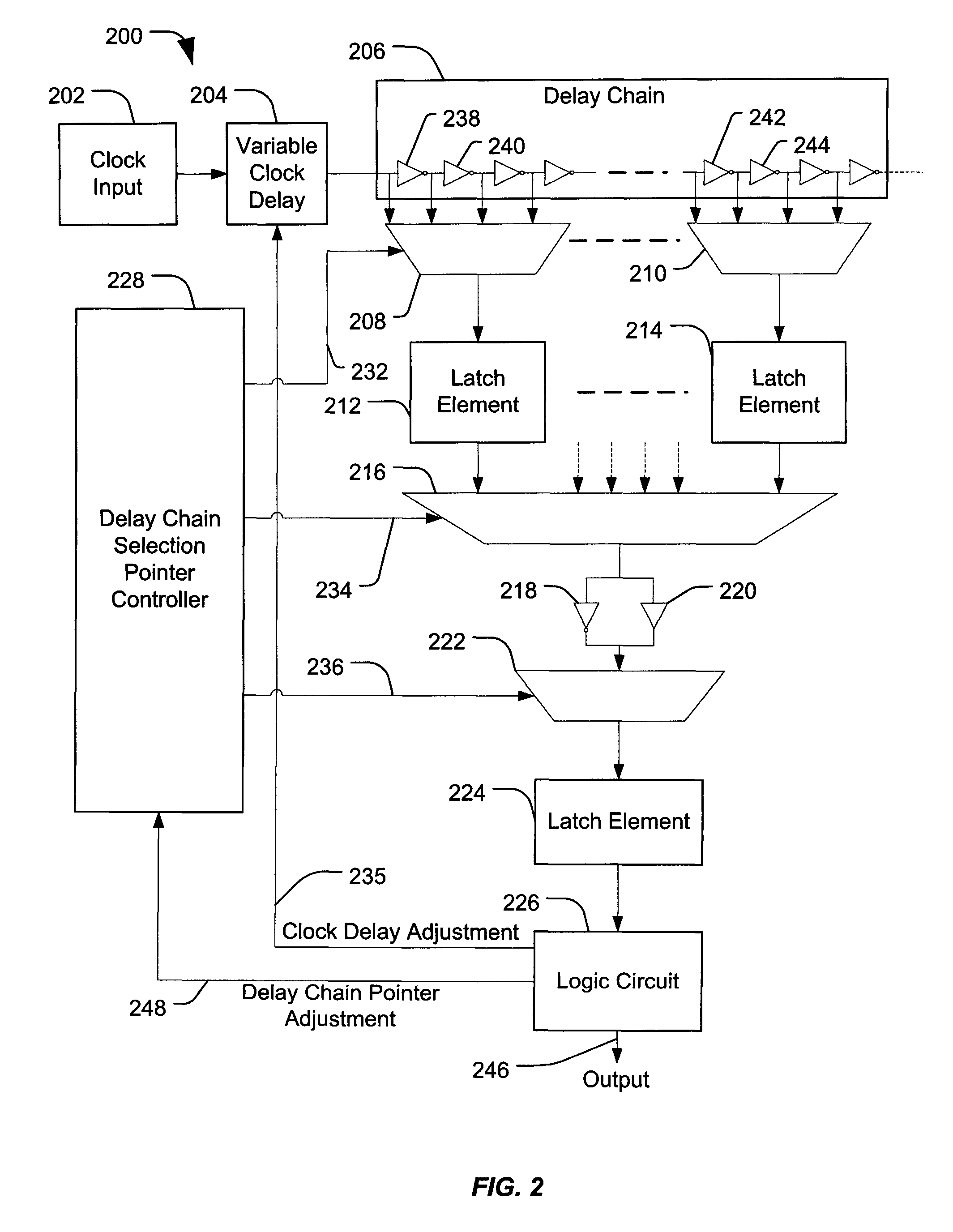Circuit device and method of measuring clock jitter
a clock jitter and circuit device technology, applied in the direction of noise figure or signal-to-noise ratio measurement, resistance/reactance/impedence, instruments, etc., can solve the problem of difficult to accurately measure the reduction of processor frequency, the parametric yield limitation of the clock jitter circuit device, and the difficulty of reducing the processor frequency. problem, to achieve the effect of enhancing the operating clock speed of the circuit device, reducing the clock jitter margin, and high accuracy in
- Summary
- Abstract
- Description
- Claims
- Application Information
AI Technical Summary
Benefits of technology
Problems solved by technology
Method used
Image
Examples
Embodiment Construction
[0025]FIG. 1 is a graph 100 illustrating a clock signal 102 that includes timing uncertainty due to jitter. The graph 100 includes an x-axis representing time and a y-axis representing a logic level or voltage level. It should be understood that the time axis may indicate time in units of circuit delay, units of absolute time (such as nanoseconds), other units, or any combination thereof. The clock signal 102 has a nominal clock period 106 and has a detected clock period with jitter 108. In general, clock jitter is a distortion in clock cycle and phase difference accumulated over time, such that the clock edge (rising edge, falling edge or both) may be distorted, or may arrive early or late relative to an expected nominal clock edge. Early rising clock edges caused by jitter are generally indicated by reference numerals 104 and 112 and a delayed clock edge is generally indicated by reference numeral 110.
[0026]In general, the clock signal 102 may include multiple potential transition...
PUM
 Login to View More
Login to View More Abstract
Description
Claims
Application Information
 Login to View More
Login to View More - R&D
- Intellectual Property
- Life Sciences
- Materials
- Tech Scout
- Unparalleled Data Quality
- Higher Quality Content
- 60% Fewer Hallucinations
Browse by: Latest US Patents, China's latest patents, Technical Efficacy Thesaurus, Application Domain, Technology Topic, Popular Technical Reports.
© 2025 PatSnap. All rights reserved.Legal|Privacy policy|Modern Slavery Act Transparency Statement|Sitemap|About US| Contact US: help@patsnap.com



